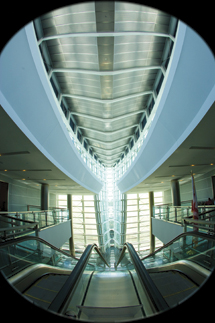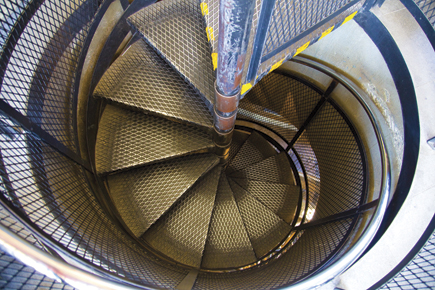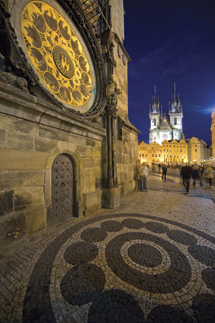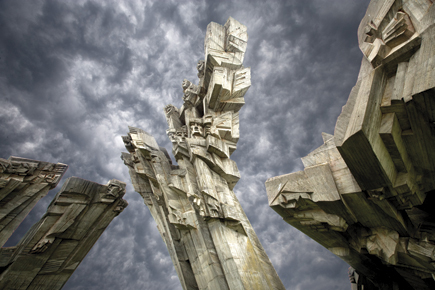Hi, My daughter has a Canon Ti2 and wants a 14 mm AF lens. The canon is way out of my range, could someone tell me if her Ti2 is compatable with the Sigma 14mm f2.8 EX Aspherical
Thanks
Super Wides
Super Wides
Exaggerated Points Of View
by Jim Zuckerman
If you like straight, unaltered images and you diligently try to capture what you see with your eyes, super wide angle lenses are not for you. At the very least the images will give you a headache. However, if you like thinking outside the box (and sometimes outside the known universe!), and march to the beat of a different drummer, lenses in the 8-15mm range have an allure that will be irresistible. The distortion they introduce to a scene is intriguing, and it allows you to think very differently about the kind of pictures you want to take.
An 8mm fisheye lens encompasses 180?. This means that everything in front of you and to the extreme right side and the extreme left side is included in the frame. Third party lens manufacturers like Sigma find niche markets that Canon and Nikon have either ignored or overlooked, and their 8mm lens is an example. The edges of the picture area are far from sharp. The center of the lens is sharp, but you don’t use a lens like this looking for tack sharp detail from edge to edge. The glass elements of the lens bend the light in such an extreme way that it’s not possible to retain critical sharpness at the edge of the frame.
 |
|
|
In addition, an 8 mm focal length produces some vignetting as you can see in the interior shot of a building in New York (#1). Canon’s 15mm fisheye, on the other hand, fills the entire frame with an image. I photographed the top of a spiral staircase in the Czech Republic (#2) with a 15mm fisheye not only to include the entire graphic shape in the frame, but this kind of super wide angle shot makes a very compelling image. The lens re-makes the shape of a subject into something that didn’t exist, and often the graphics that you end up with are more interesting than what you saw. The interior of the first indoor shopping mall in Milan, Italy (#3) looks intriguing distorted with a full frame fisheye. Note how the floor curves upward and how the architecture on either side of the frame curves inward.
 |
|
|
 |
|
|
The 14mm lenses that Canon and Nikon make are not fisheyes. They have extreme distortion but they do not curve the vertical and horizontal lines of objects. The famous clock I photographed in the Old Town of Prague (#4) is an example. The ground seems to be angled downward when in reality it was quite level, so you can see that this image distorts reality. None of the major lines are curved, however. The carnival shot on Burano Island in Italy (#5) shows the same kind of extreme distortion, and because this was taken with a rectilinear lens (a super wide lens that does not vignette into the edges or produce a circular image within the rectangular frame), the lines are straight and not curved. In the Canon lineup, 14mm is rectilinear while the 15mm lens is a fisheye. Focal length does not determine whether or not a lens is a fisheye. It’s the lens design that determines it.
 |
|
|
 |
|
|
These super wide angle lenses should not be confused with the new generation of digital lenses designed to accommodate cameras with smaller than full frame sensors. Canon’s 10-22mm and Nikon’s 12-24mm wide angle lenses aren’t as wide as their numbers indicate because you must consider the multiplication factor of 1.5x for Nikon and 1.6x for Canon. The 10mm focal length on the Canon lens ends up being a 16mm lens, and although this is quite wide and it gives you a great perspective, it’s not what I would consider super wide. Nikon’s 12mm focal length when multiplied by the 1.5x factor becomes an 18mm lens.
One of the challenges when using super wide angle lenses outdoors is that they include a lot of sky in the compositions, and too often the sky is uninspiring. To remedy this problem I use Photoshop to replace the boring sky with one that is more dramatic or compelling in some way. The Holocaust Memorial I photographed in Kaunas, Lithuania (#6) was shot against a white sky, and I thought it was especially appropriate to add the storm clouds for artistic reasons as well as to underscore the fact that in this place 80,000 people were murdered in World War II. This was taken with a 14mm wide angle, and so much of the original sky was included in the shot that I thought it detracted from the huge and impressive sculpture.
 |
|
|
 |
|
|
Another important point is that although these super wide angle lenses have incredible depth of field, it is not unlimited. When you place the camera very close to a subject, such as in the shot of the cow (#7), depth of field becomes a critical factor. If you want the background to be sharp you’ll need to close the lens down. In this particular shot, I didn’t care about the background and I couldn’t have used a tripod anyway because the cow was constantly in motion. When shooting a landscape, though, it’s a good idea to use at least f/11 or f/16 when using a wide angle lens close to the foreground.
- Log in or register to post comments













































